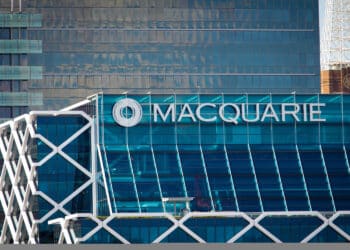Looking at the top 10 largest stocks in the world at the start of each decade, Maroun Younes, Fidelity Global Future Leaders Fund’s co-portfolio manager, has weighed in on the current “Magnificent Seven” tech stock rally dominating markets.
Year to date, the S&P 500 has risen around 8.5 per cent and 30.31 per cent since March 2023. Similarly, the MSCI World index has delivered some 5.55 per cent and 25.59 per cent respectively.
Younes observed much of this strong performance is being driven primarily by a handful of mega-cap US names, almost exclusively within the technology space.
Looking back through history, he highlighted the “Nifty Fifty”, a collection of favoured buy-and-hold blue‑chip stocks in the US that share similarities with today’s market rally.
“These stocks were so well loved that their valuations became quite stretched. However, from around 1973 onwards, these stocks cratered and went on to underperform the broader equity market. Since then, we’ve never seen the top five companies in the USA command a 25 per cent market share of the US equity market – until now,” Younes stated.
Looking at the top 10 largest stocks in the world at the start of each decade – from the 1980s to 2020 – he pointed out that although the composition changes “radically” over time, each decade is dominated by a big theme.
“In the 1980s it was oil, and six of the top 10 were in the broader oil industry. In 1990, it was Japan’s seemingly unstoppable rise, and eight of the largest 10 stocks in the world were Japanese. In 2000, it was the dot.com bubble, and eight of the top 10 were from the TMT sector,” he said.
“A decade later, it was China’s turn to take over the world, and most companies in the top 10 (with perhaps the exception of Microsoft) were companies that were either Chinese, or exported a lot to China, and thereby China was a big source of growth.”
Younes added: “Interestingly, each subsequent decade has only seen one or two names in its top 10 that were present in the previous decade’s top 10. This highlights the lack of persistency in being able to remain a top performer for long stretches of time.”
From this lens, he built a simple, equal-weighted portfolio for a pretend investor, taking the 10 largest stocks of each decade, calculated their subsequent returns for the following decade, and compared this to the returns delivered by the MSCI World Index for the same subsequent time period.
“In all but the 2010 vintage, our investor would have underperformed the broader market by investing in the mega‑cap names of the time,” Younes said.
“And if we strip out Apple from the 2010 portfolio it, too, would have significantly underperformed the broader market.”
Moreover, Younes added: “Analysis from GMO, this time comparing investing in the largest 10 US stocks versus the rest of the S&P 500 shows that, on average, since 1957, you would have underperformed.”
However, he explained, since 2013, investing in the mega caps has been a winning strategy.
“Whilst unusual, this is not unheard of – we witnessed similar episodes in the late 1960s/early 1970’s (Nifty Fifty era), as well as in the late 1990s (dot.com and internet bubble).”
For the Magnificent Seven, most of the outperformance has been driven by earnings, meaning the valuation multiples for US mega‑cap tech, although high relative to the broader market, “can get to even more elevated levels than where they are today”, the portfolio manager mused.
Their “amazing run” of outperformance could, however, end if future earnings disappoint the “lofty expectations that have been set for them”.
“It’s worth keeping in mind that the Magnificent Seven are now more akin to countries, rather than companies, with respect to their sheer scale,” Younes said.
Namely, in aggregate, the Magnificent Seven generate profits roughly equal to the entire Japanese stock market, or around half of the entire Chinese market.
“So the question now is: Can companies the size of individual developed nations continue to grow at breakneck speed and, if so, for how long?”
Younes highlighted Nvidia as the pack leader through the course of 2023 and the new year.
It reported quarterly earnings of US$22.1 billion in February, growing 22 per cent for the fourth quarter ended January 2024. Earnings were up 265 per cent from a year ago, with Nvidia’s founder and chief executive, Jensen Huang, attributing the monumental growth to surging global demand, which has propelled generative AI and accelerated computing to “the tipping point”.
Younes contended that Nvidia has been a “standout performer” in 2024, with the revenue generated in its data centre division equivalent to some 40 per cent of the cloud capex currently being spent by Amazon, Google, Meta, and Microsoft combined.
“Obviously, Nvidia is selling GPUs to more than just these four customers, and the total capex spend of this cohort of customers is going on not just GPUs, but a whole bunch of other things as well [like] CPUs, DRAM, NAND, network switches […] But it nevertheless does highlight how Nvidia’s fortunes are closely tied to its fellow mega-cap brethren,” he explained.
“If one or more of this group of important customers needed to scale back cloud investment for whatever reason, it could have contagious effects.”
According to Younes, while predictions of the end of the US-mega cap tech reign have proven incorrect to date, it remains “prudent” to consider diversification within a portfolio.
“I’m not saying it’s game over for these guys from this point on, but I do think it’s prudent to think of other areas of the market that can also generate robust investor returns going forward and to diversify into them, given that history isn’t on the side of the Magnificent Seven,” he said.







